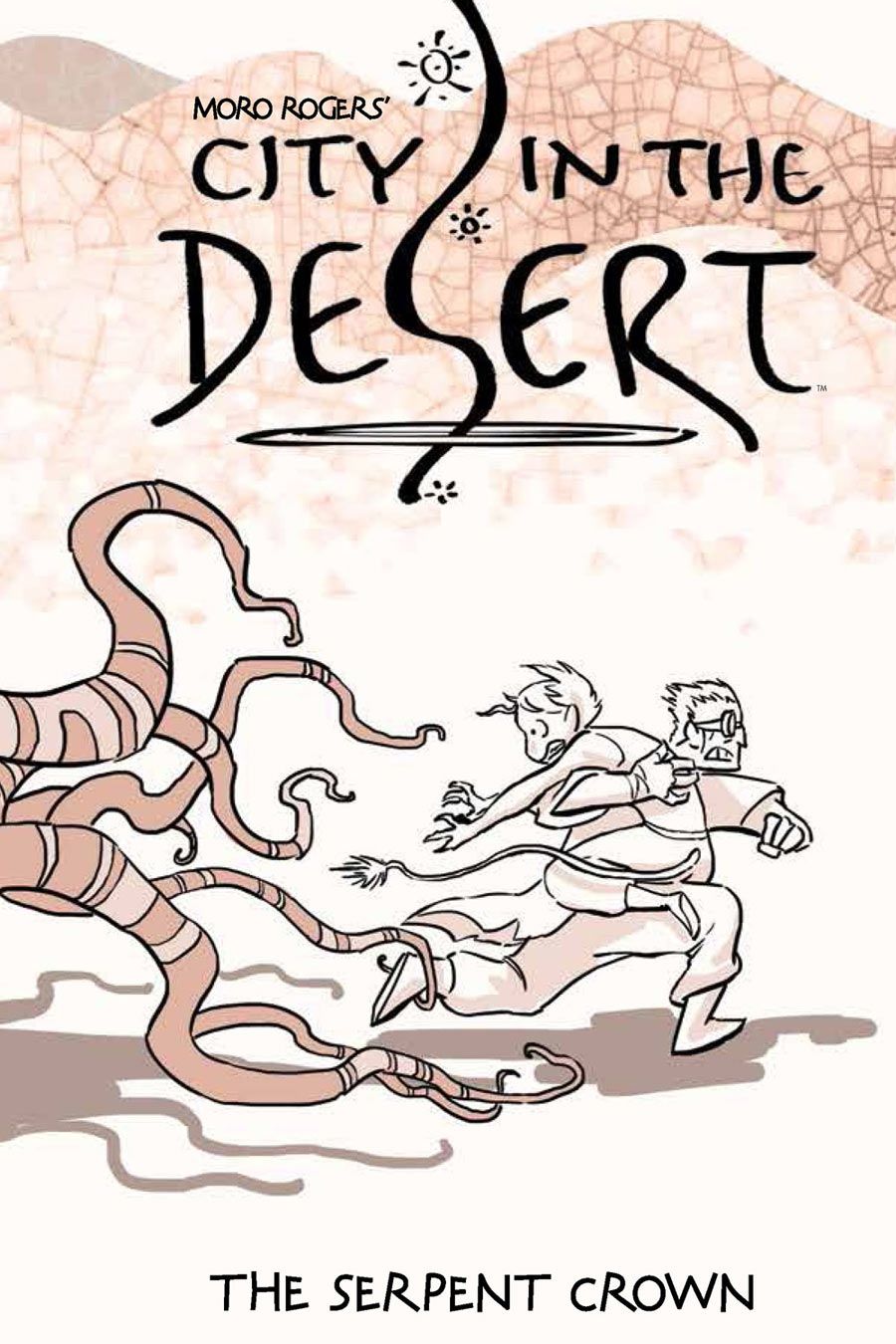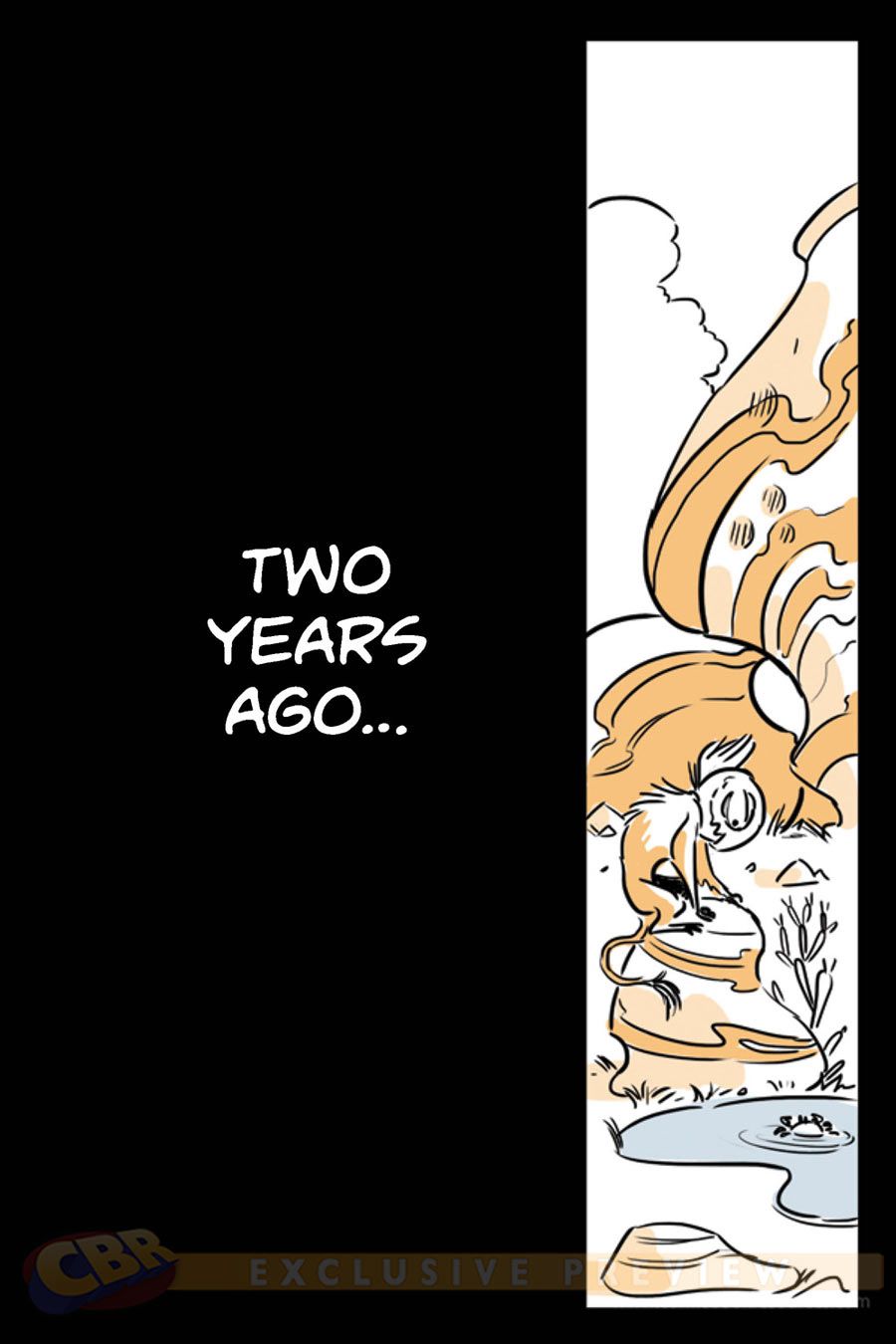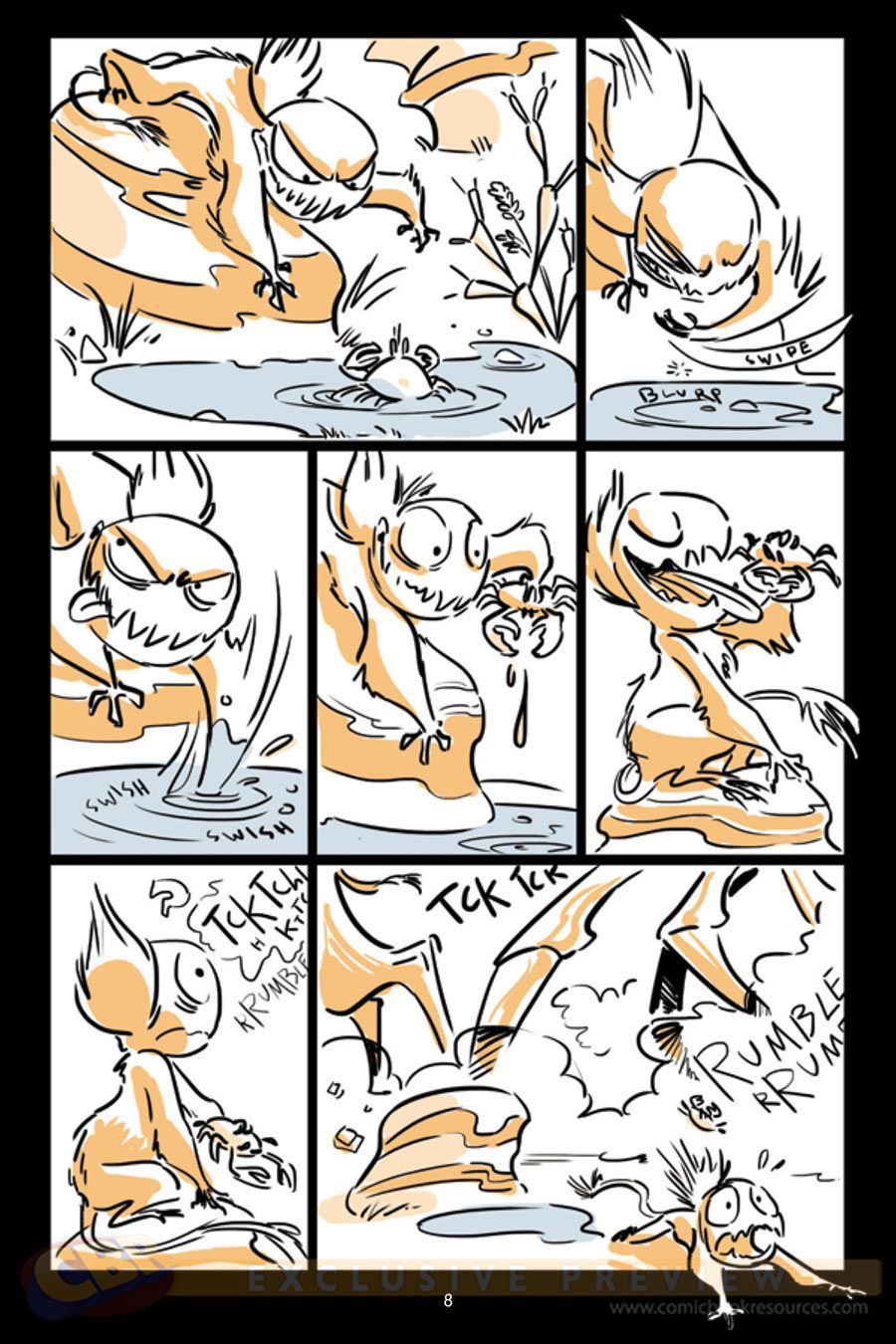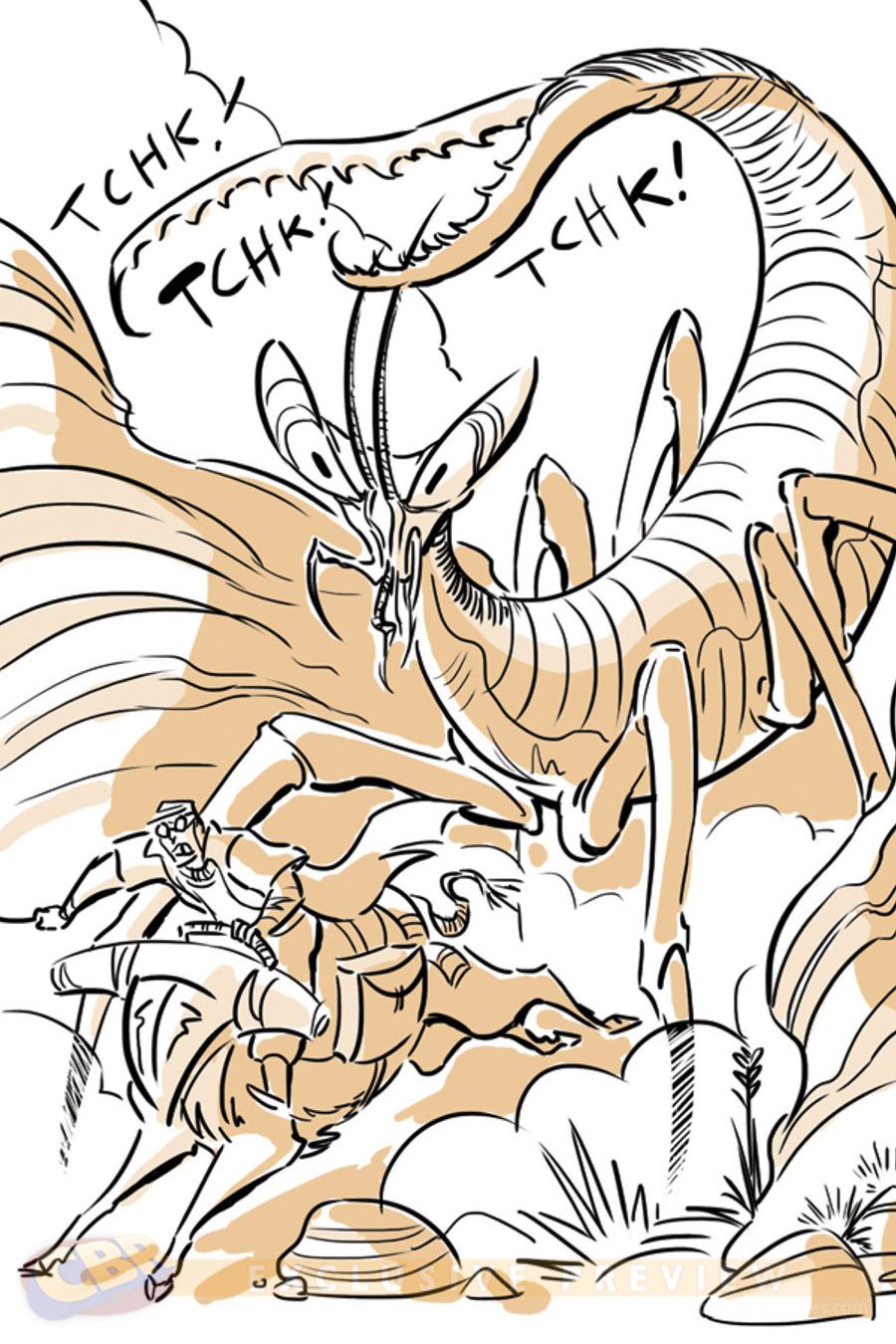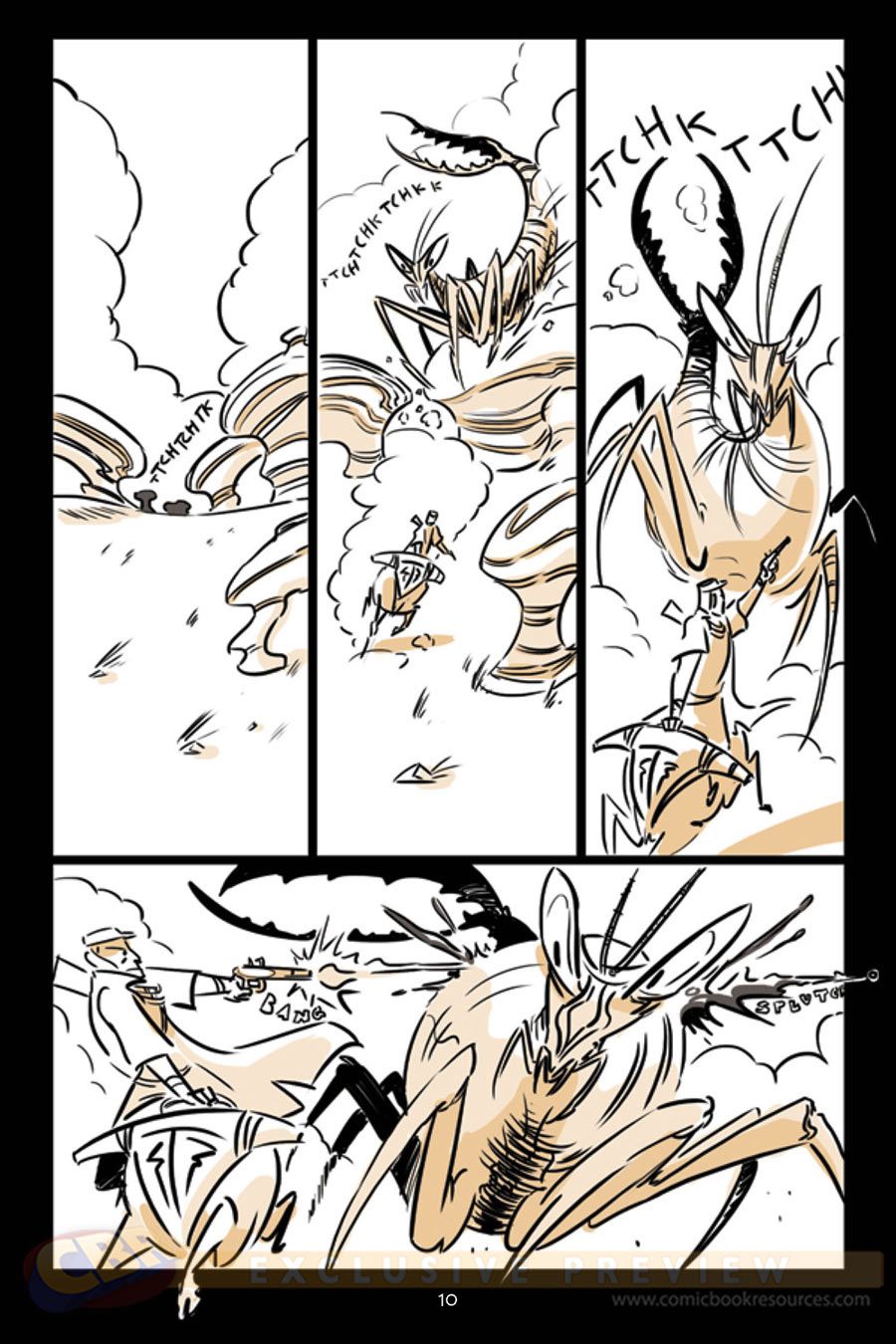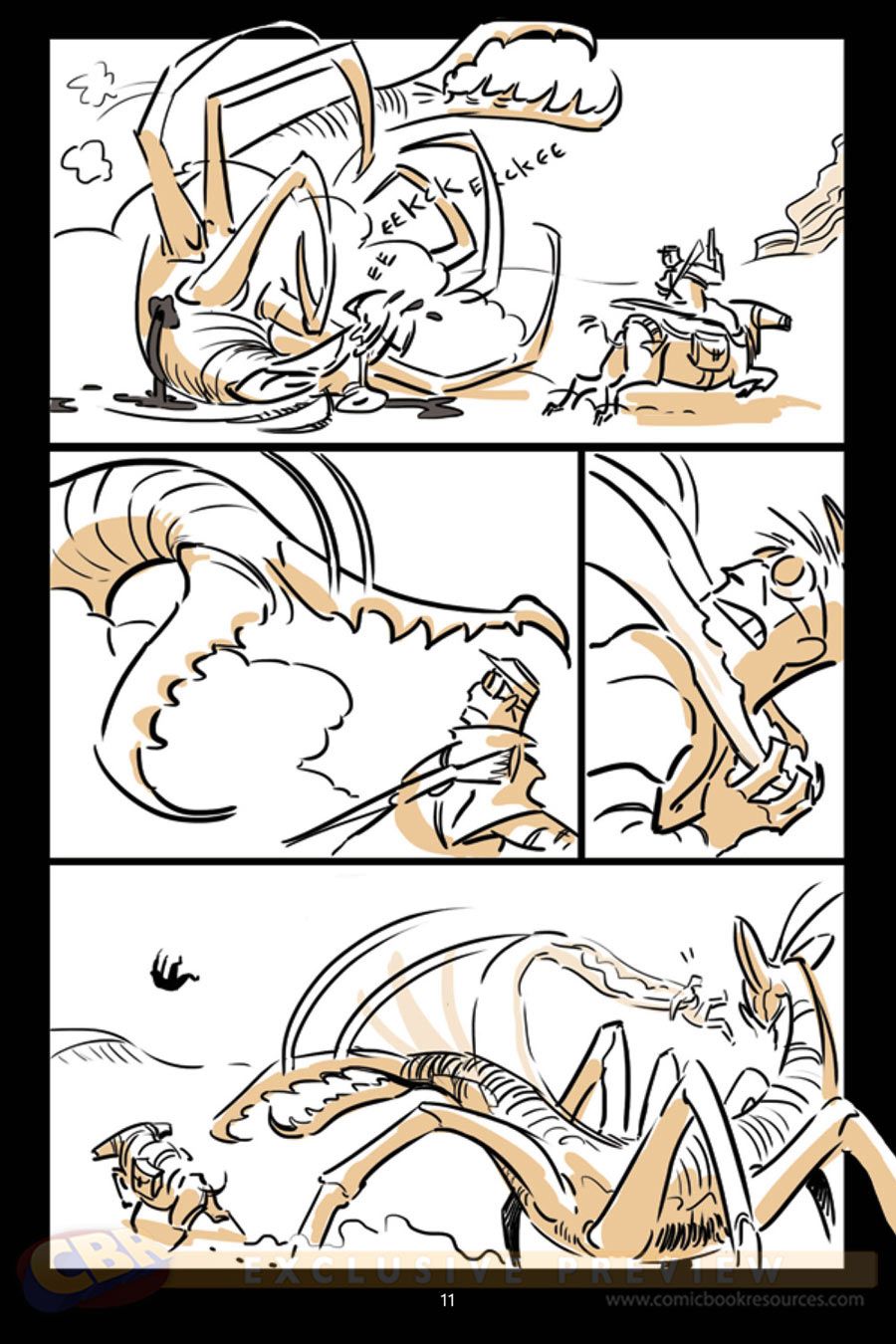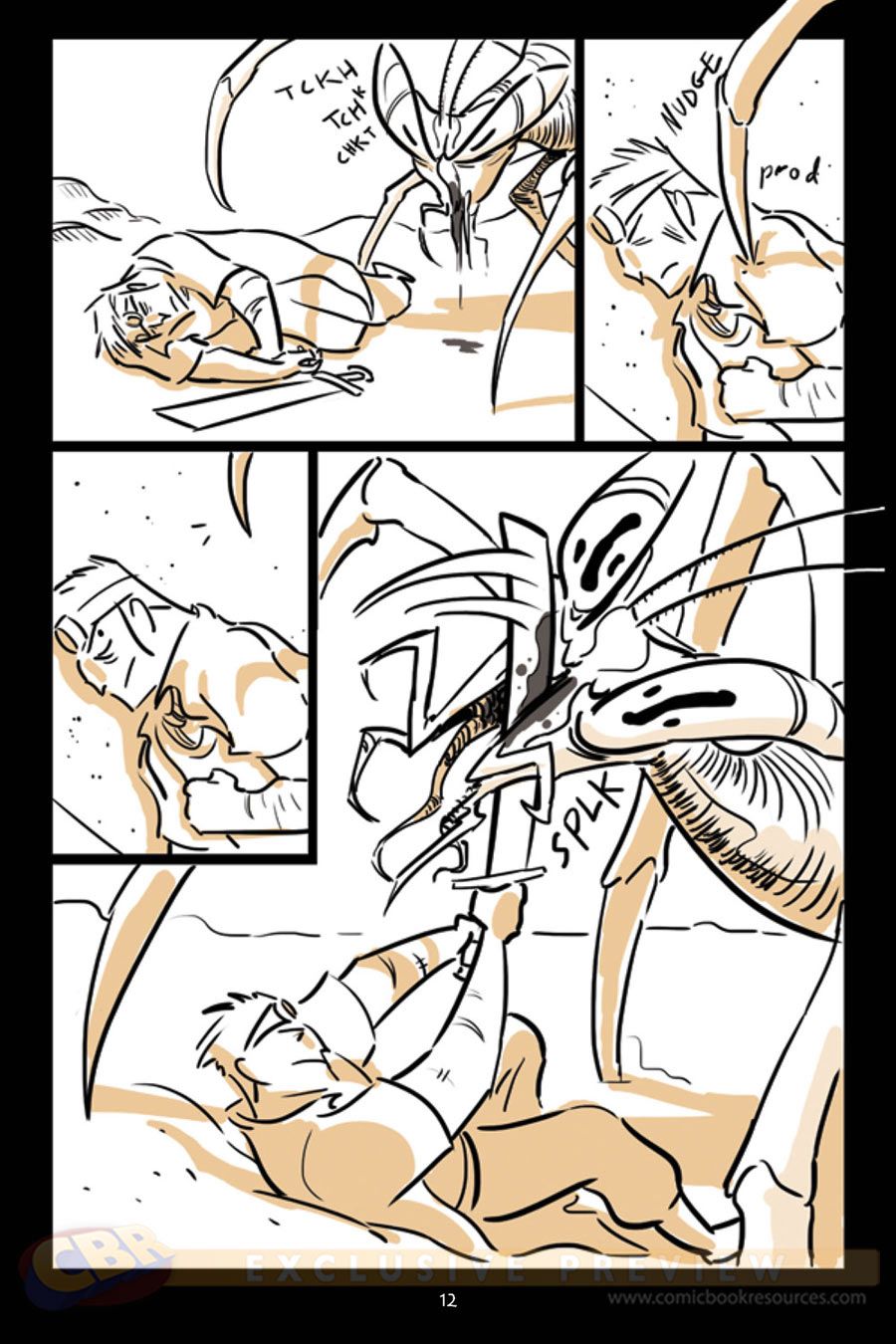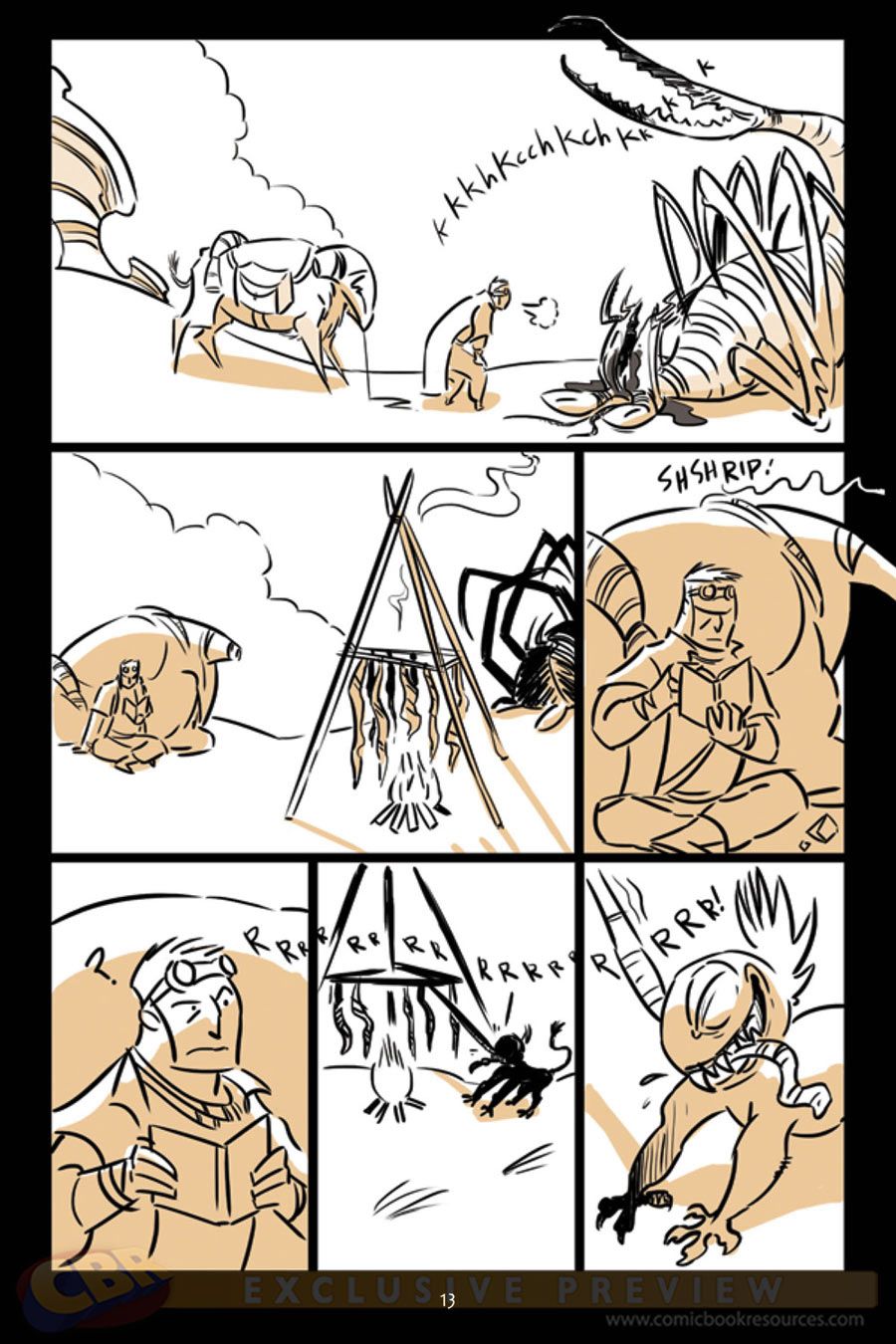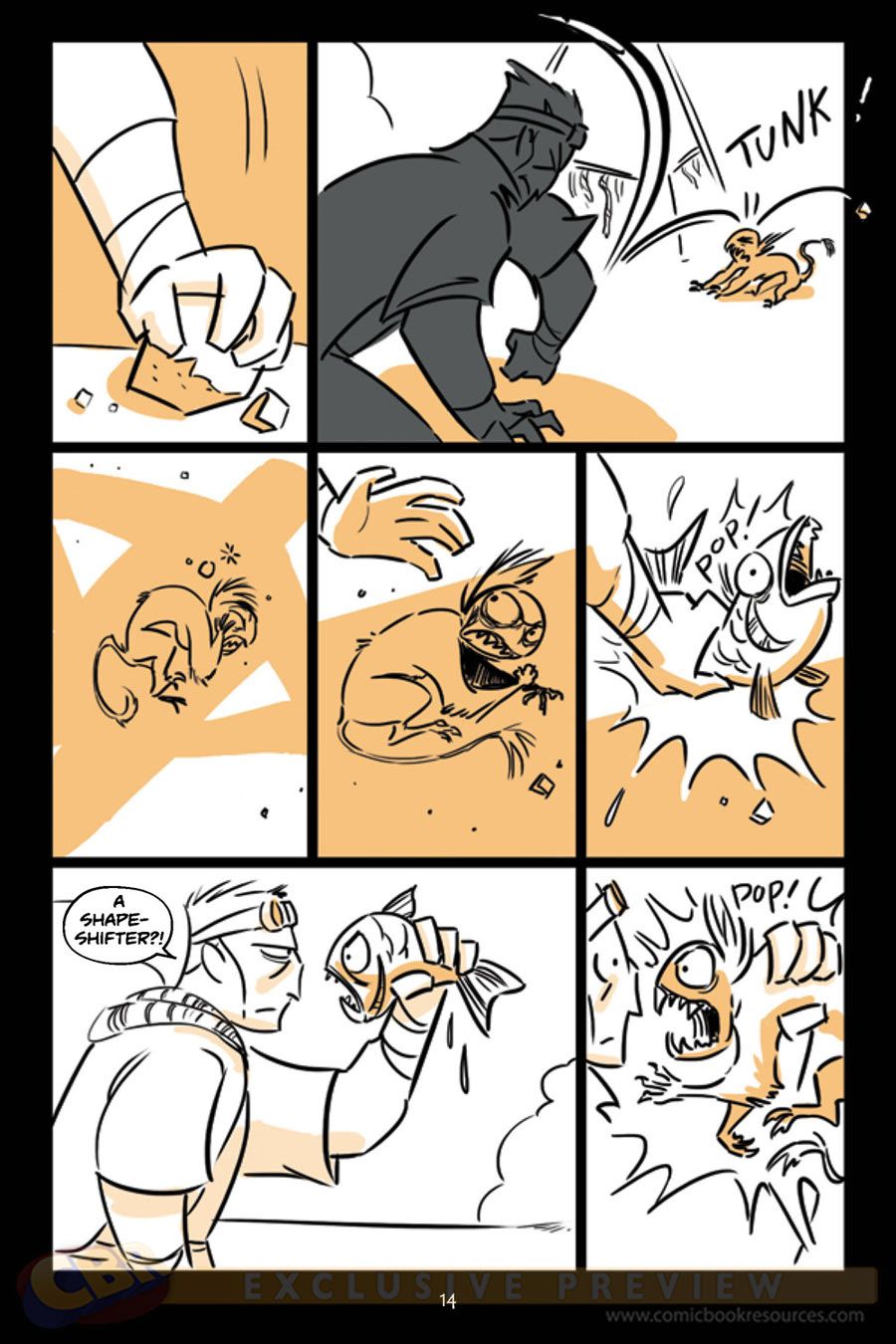The desert can be a dangerous place. Hot, remote and difficult to navigate, imagine how much worse it would be with monsters! Unfortunately for Irro and Hari, that's the world they live in in Moro Rogers' "City in the Desert" series of graphic novels.
Written and drawn by Rogers, the second book in the Archaia-published series lands in stores on March 5. The second volume picks up right where the previous volume left off, with long time monster hunters Irro and his monkey-ish assistant Hari attempting to figure out what's going on in their home town of Kevala. A mysterious stranger closed off the local Spirit Fountain, and action which seemingly killed all of the monsters in the surrounding area. However, it also turned the populace of the city into either daydreaming sheep or looting sociopaths.
"The Serpent Crown" starts with a flashback giving a few details about the mysterious Hari who may have some connection to the monsters she and Irro hunt. Back in the present, the duo journey to the Monster King's prison in order to free him and bring him over to their side.
To get the story behind "City in the Desert Volume 2: The Serpent Crown" CBR News talked to Rogers about kicking off this second volume, the role of monsters in the world and the idea kernels that grew into the world of Kevala.
CBR News: How do you explain the philosophy of "City in the Desert "to potential new readers?
Moro Rogers: It's a world where thought has an independent existence of its own. Bad thoughts grow into monsters, literally. And someone has to keep the monsters under control.
Was the seed of the idea that grew into "City in the Desert" monster related?
A long time ago, I had an idea about a clan of monster hunters who had to fight for their way of life when a mad scientist started replacing the monsters with robots. Because robots were more tractable. I decided it was too gimmicky, and I wasn't that interested in robots. Some time later, I read about a philosopher who thought it would be a good idea to get rid of all the predatory animals. One would use genetic engineering and very advanced surveillance equipment, I guess. It sounded like an arch-villain's evil plan, and I got inspired.
On the City in the Desert Facebook page you posted a drawing of a baby with the tease that it has something to do with Volume 3. Can you tease anything more about that?
Volume 1 started with a creation story. Volume 3 does, too. It's mostly done, but I have to fix some things. There are always things to fix. Ideas to make the story better can still appear fairly late in the process.
The first volume ended with Kevala split between sleepers and looters, and our heroes trying to figure out their next play. Where does the second volume pick up?
With a flashback that explains a few things. Our heroes figure out their next play when the flashback -- which is about the origin of Hari -- is over.
In addition to learning more about Hari, it sounds like she and Irro will encounter some new monsters on their way to freeing the Monster King. How do you go about designing the story's new creatures?
I'd like to be able to say that I had a complicated process for designing monsters, but mostly, I just took real animals and added more spikes. [Laughs] I'd think, "I haven't done a giant bug yet," so I'll draw a giant bug, or, "I already did a giant bug. It was sort of mantis-y, so how about a giant rhinoceros beetle?" I also didn't think it would fit with the tone and look of the book if the monsters were too alien or H.R. Giger-ish.
What can you tell us about the main villain of the book, the Monster King?
He's different from the other monsters because he's the first, and he can talk. He's the embodiment of natural chaos. I find it sort of frustrating that real-life chaos doesn't have a voice.
A huge part of "City in the Desert" revolves around the question of whether killing off the monsters is the right thing to do or not. What role do you see monsters playing in the book and does that reflect an aspect of our society that you wanted to explore?
I think the monsters are more representative of forces outside our society. They're any big, messed-up, dangerous thing we are always trying to reign in, either external or internal. And they are integral to the workings of the universe within the story. I guess what I was trying to say was that you can't take the monsters out of nature without breaking it.
Moro Rogers' "City in the Desert Volume 2: The Serpent Crown" debuts from Archaia on March 5.


